The Judson Mead Geologic Field Station of Indiana University is in the Tobacco Root Mountains, 40 miles southeast of Butte, Montana, and 65 miles west of Bozeman.
Field Station Campus
Geologic setting
The overthrust belt, less than 50 miles west of the Field Station, is characterized by thin-skinned tectonics. It bends sharply to the east and also extends through the north end of the Tobacco Root Mountains, where the northernmost zone of basement-cored (“thick-skinned”) upthrusts of the Wyoming Province is found. The Field Station is located within a few miles of the intersection of these two major structural styles. Consequently, a remarkable array of both small–and large–scale structures associated with the two major tectonic styles is available for study, together with a sampling of basin-and-range or block faulted structures.
The area exhibits a great variety of geological features in a nearly complete section of igneous, sedimentary, and metamorphic rocks that range in age from Precambrian to Pleistocene, and that are mildly to intensely deformed. The Field Station’s South Boulder location was originally chosen by Charles Deiss in 1948 because he felt that “the region offers more extensive and varied geologic phenomena than any area of equal size in the United States.”
The park-like setting of the Field Station campus itself lies at the confluence of Carmichael Creek with the South Boulder River. Both streams flow through parts of the 60 acres that constitutes the Field Station property. Most of the buildings sit upon a flat terrace of the South Boulder, about 80 feet above stream level. The Field Station is 5,280 feet above sea level.
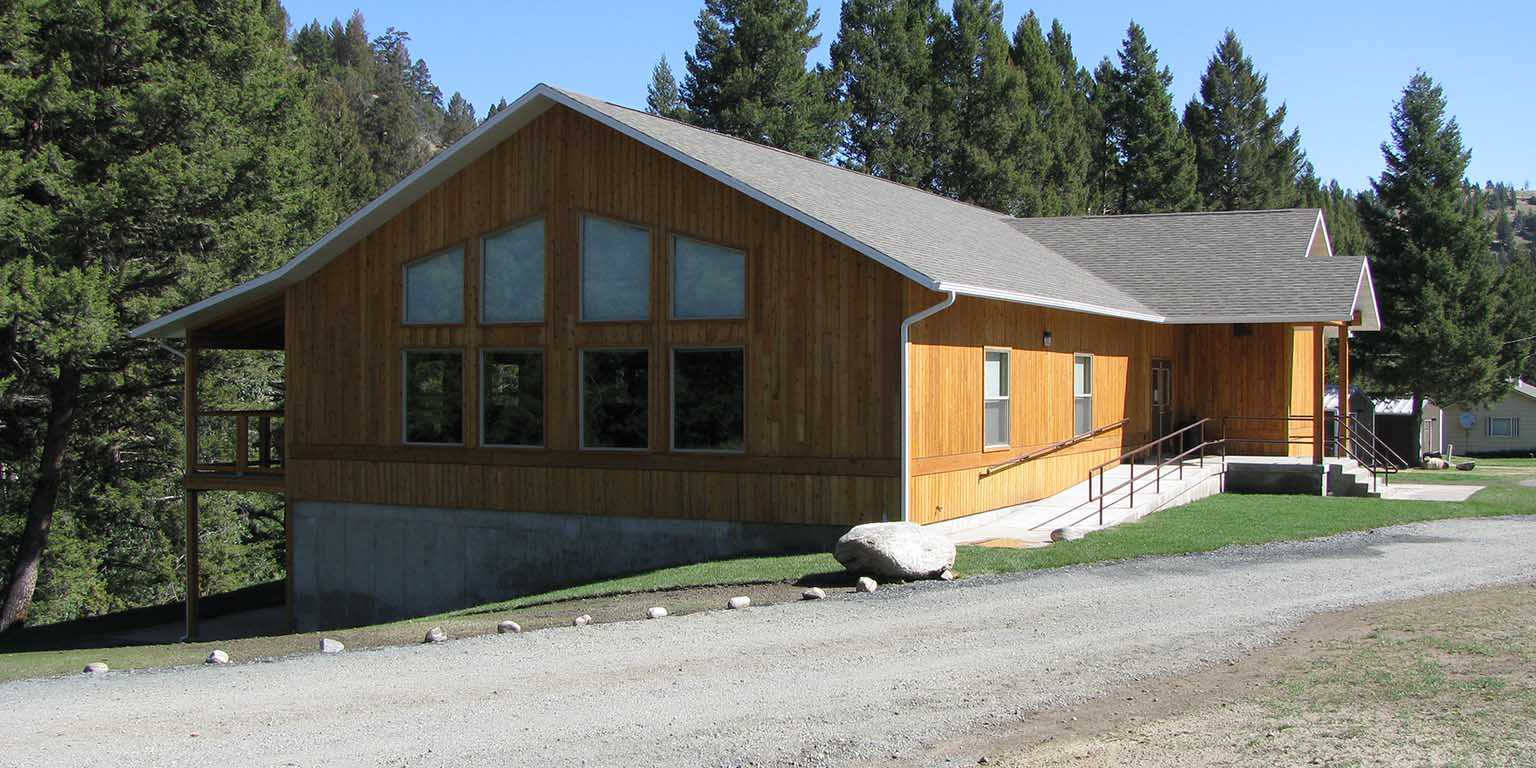

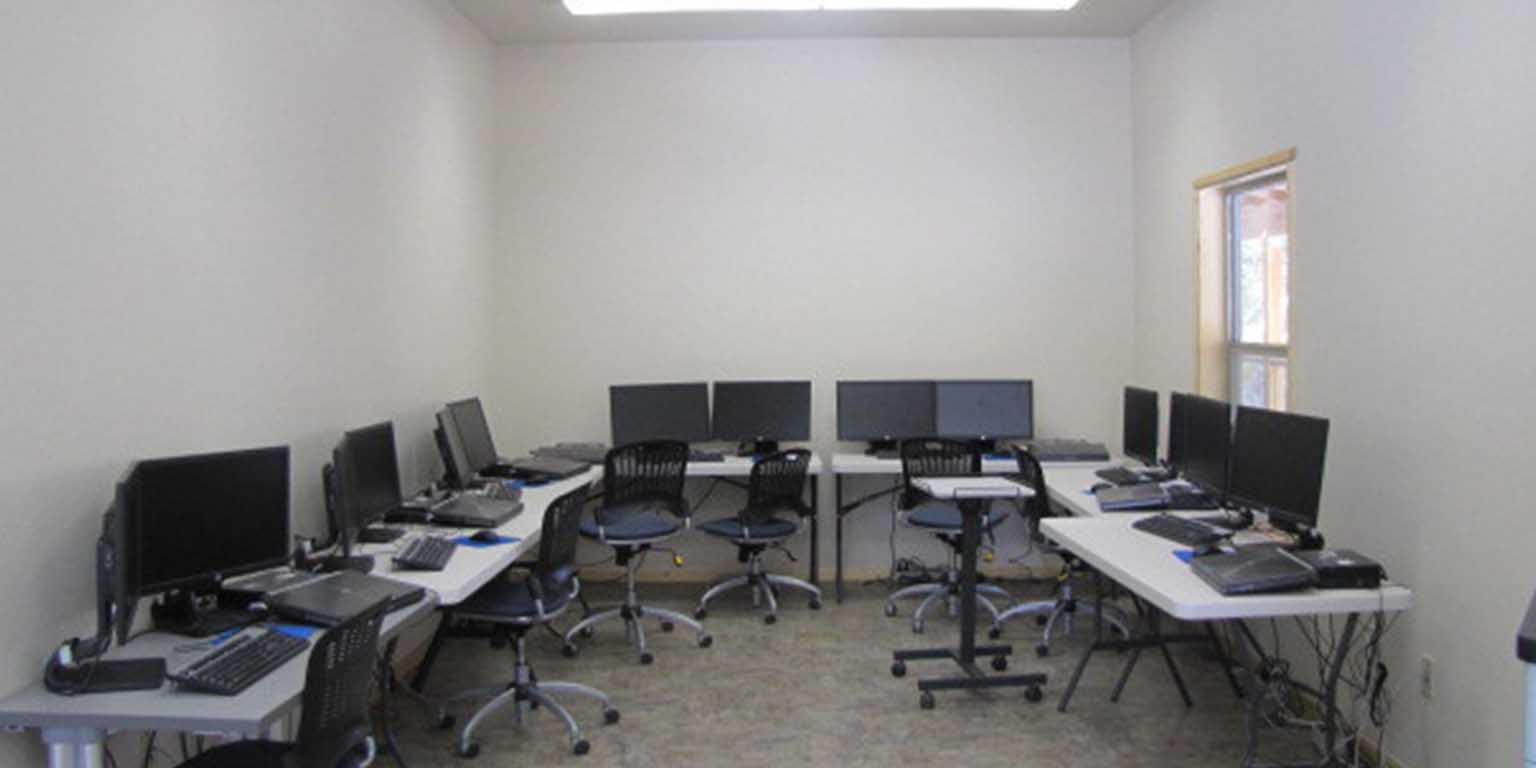

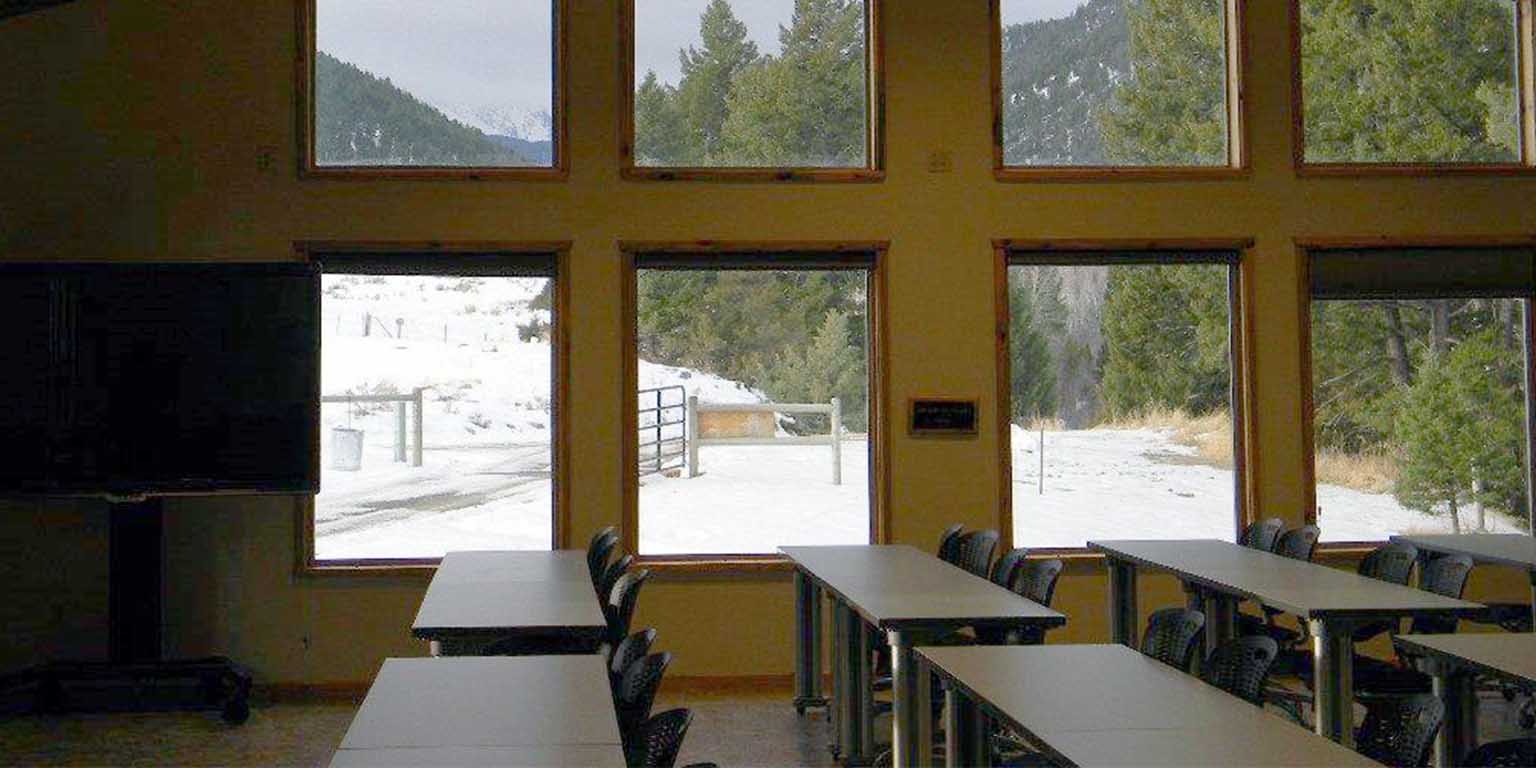
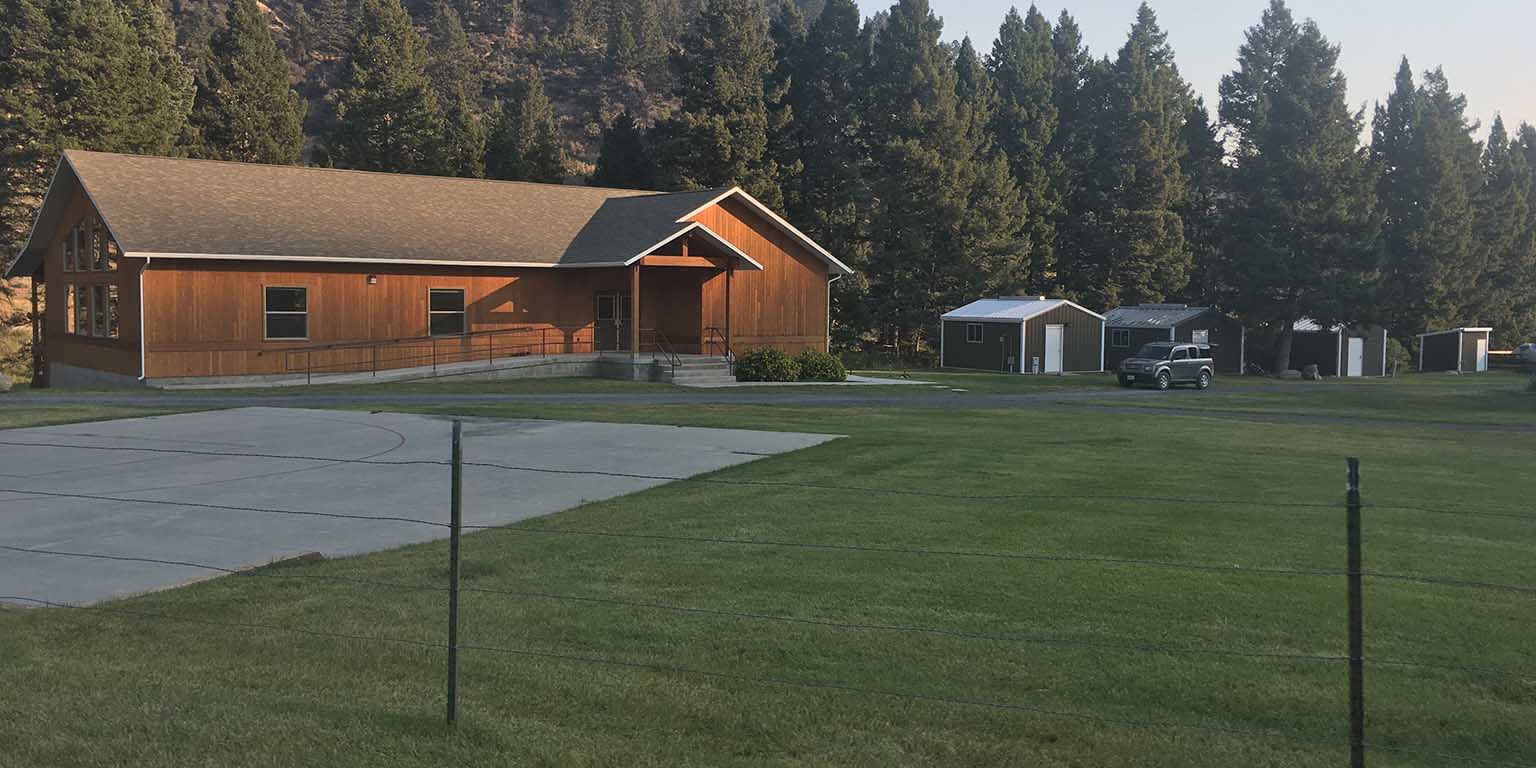

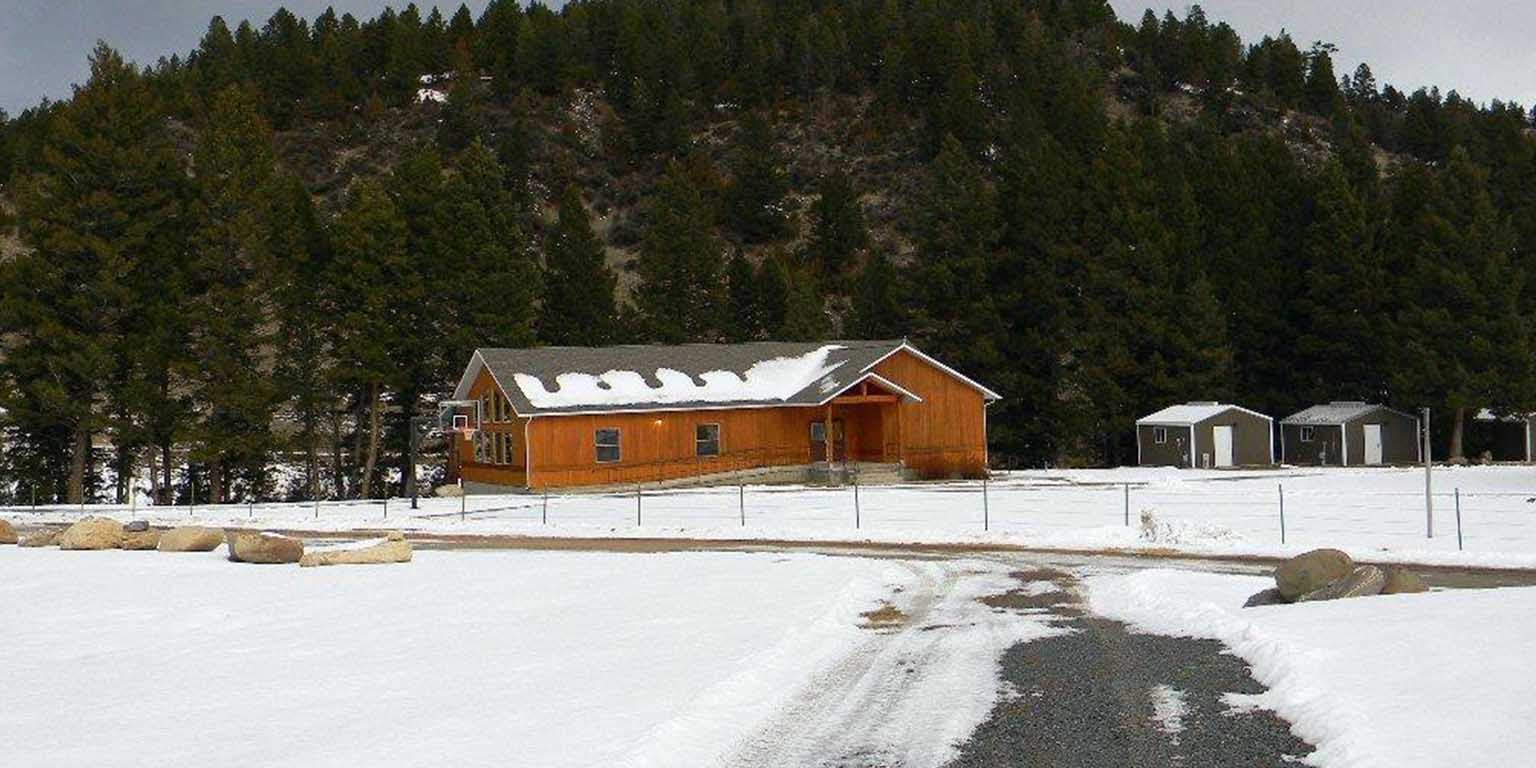
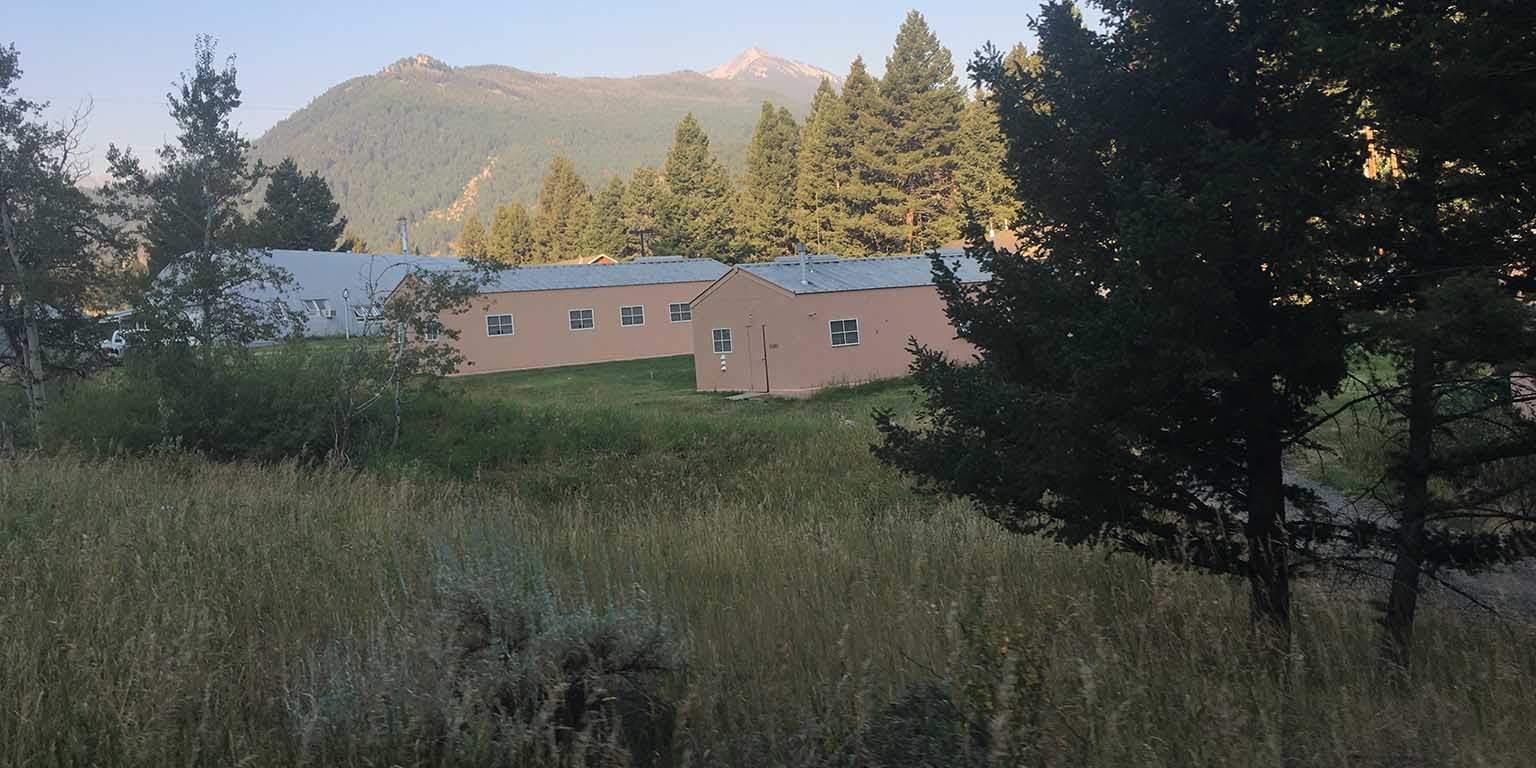
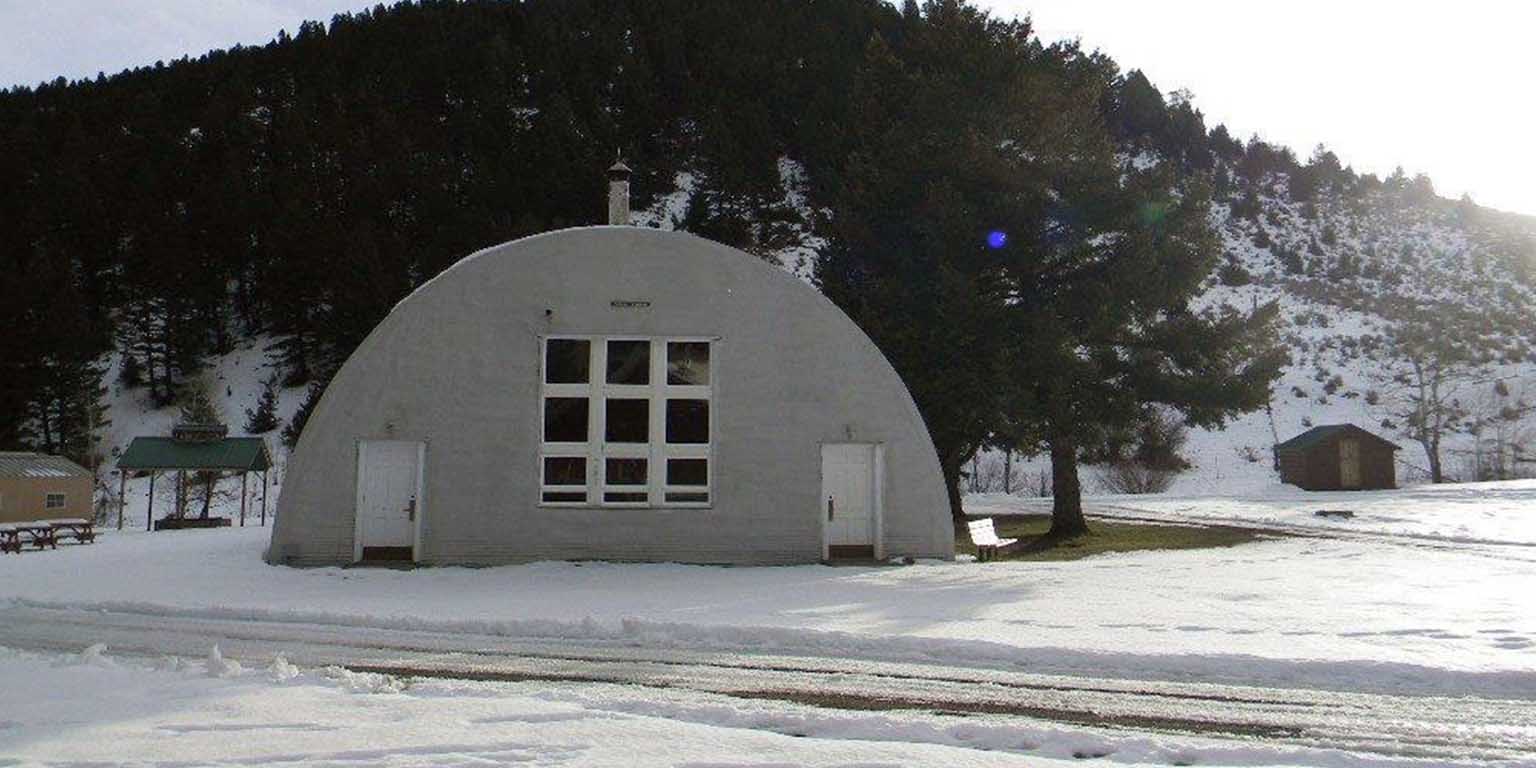

Charles F. Deiss Lodge
The heart of the Field Station is the Charles F. Deiss Lodge, the focus for meals, recreation, study, and evening work sessions. The Lodge houses the dining hall and kitchen, which employs a staff of two cooks and three or four kitchen helpers. Students are not responsible for any aspect of Field Station maintenance or food preparation. Hot meals are provided for breakfast and dinner every day, and abundant and diverse choices are available for making your own lunch.
Mail is picked up Monday through Friday in Cardwell, Montana, and distributed to a mailbox in the lodge. During the summer, the Field Station assistant runs a small store for items such as pens and pencils, erasers, notebooks, postage stamps, and other simple necessities. The lodge is also the location of the two phones (one pay phone, one credit card phone) available to students. In addition, an extensive library of textbooks, theses, and reprints pertinent to Northern Rockies geology is found in the lodge.
Classroom & Geotechnology Center
The new classroom and geotechnology center at the Judson Mead Geologic Field Station in Montana was dedicated in August 2012. The two-story facility includes a state-of-the-art lecture hall, a computer center with 15 dual monitor desktop work stations, a lower level with laboratory space for field instrument storage and calibration, and a suite of sample preparation equipment and analytical instruments for geologic and hydrologic samples.
The new classroom building is located near the Charles F. Deiss Lodge, the heart of the Field Station. The lecture hall has a view up the South Boulder valley at the high peaks region of the Tobacco Root Mountain range.
Student housing & recreational facilities
While at the Field Station, students are housed in insulated dormitories that have a total capacity of 20 beds in each of two large dorm rooms. Six eight-person dorms are located on both the upper campus and the lower campus. Smaller dorms and wood-frame cabins are usually used by staff and visitors.
Ample hot showers are available in two washrooms which are separate from the dormitories. Coin laundry facilities are available (including dryers) and clotheslines are also available for drying clothes on a sunny day. Many of these improvements are supported by our Maintenance Fund Endowment.
Recreational facilities in the Lodge include a piano and a ping-pong table. Outside, we have a volleyball court, paved basketball court, horseshoes, and plenty of room for frisbee. On especially hot days, hardy souls have been known to dip into the South Boulder River. More recreational options include taking a run up the Pony Road or hiking in the high peaks of the Tobacco Root Mountains.
Renting our facilities
The Field Station facilities are available for use by outside groups for retreats, studies, or field research. Groups that have used the facilities include the University of Georgia’s Honors Field trip in Anthropology and Geology; Westminster High Schools from Atlanta, Georgia; U.S. Forest Service; Southern Baptist Student Union; and Boy Scouts Webelos, among others.
Arrangements must be made in advance, and proof of liability insurance is required. (Details of required coverage will be provided at time of inquiry.) For inquiries regarding use of facilities please contact the IUGFS at 812-855-1475 or email iugfs@indiana.edu.
Driving directions
The Geologic Field Station is 11 miles from the post office and gas station in Cardwell. Montana. Driving five miles south of Cardwell on Montana Highway 359 (which we call the “Big Oil,”) takes one to the South Boulder Road. This road (also known as “Little Oil,” or Forest Road 107) is paved for the first three miles; the final three-mile segment to the Field Station is gravel and dirt. Take a left turn from the South Boulder Road toward Pony and Harrison, across the new South Boulder bridge and up the hill, and you are driving into the Field Station.
Whitehall, the “big city” where students may choose to spend Saturday evening, is 18 miles away and has a population of about 1,500.



 The College of Arts
The College of Arts